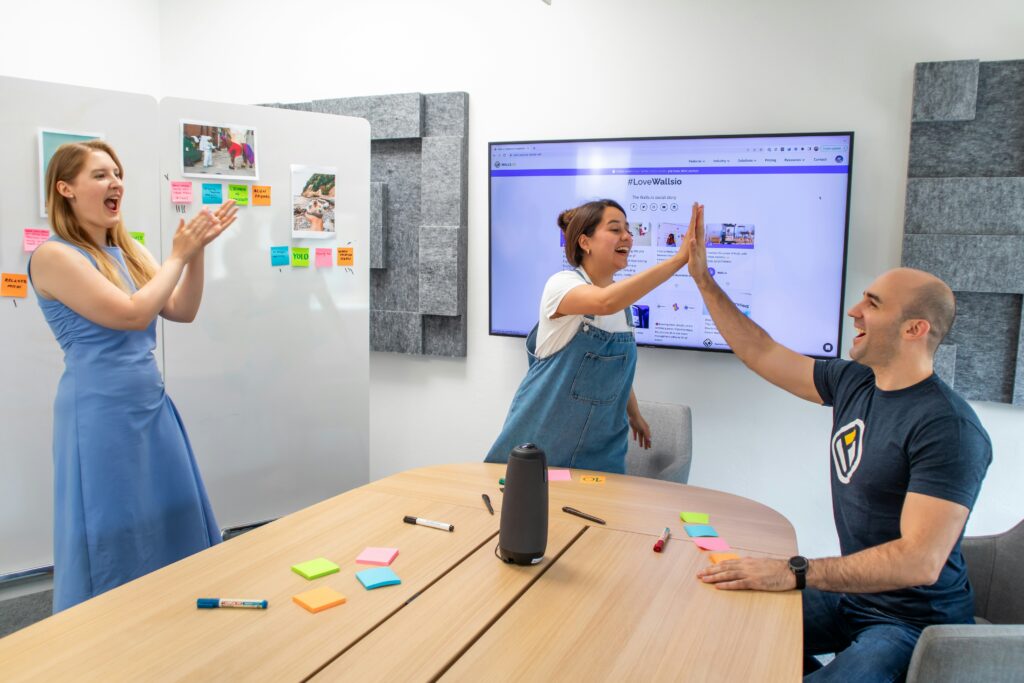Wellness Program Engagement
If you want to truly engage your employees and inspire them to care about their health and wellness, you need to think beyond simply getting them to participate in your wellness program. Incorporate as many of these as you can to build a genuine culture of wellness in the workplace.
1. Understand Your Employees’ Needs
To drive employee wellness program engagement, it’s critical to offer health and wellness solutions that fit their needs – as seen through their eyes, not yours. Biometric data can be helpful however the key is to go beyond that to understand your population’s interests, motivations, and priorities. Take the time to understand your employees and you will you build trust, get buy-in, and put yourself in position to develop communications and materials that strike a chord, resonate, and engage. You will also gain the knowledge you need to tailor your wellness program to their specific needs.
Some tools for better understanding your employees:
- Anonymous employee surveys
- Focus groups
- One-on-one interviews
2. Get Leadership Involved
Leaders are role models, so it’s important for wellness program adoption and engagement that leaders at all levels of your organization support your employee wellness program. Note that support in this context means more than simply approving a budget and signing off on proposed wellness events – it means getting actively involved in and talking about wellness activities.
Some tips for your leadership teams:
- Promote the wellness program and share testimonials at meetings and via mails and other corporate communications
- Actively participate in wellness activities, and be visible “doing wellness” wherever you can – at wellness events, on challenge leaderboards, in newsletters, talking in the cafeteria, etc.
- Implement policies that facilitate a culture of wellness – tobacco-free workplace, healthy food choices in the cafeteria and vending machines, walking meetings, flexible breaks for physical activity, etc.
3. Ensure that Your Wellness Program Is Inclusive
Your wellness program should be broad enough to appeal to a wide range of preferences, abilities, and personality types. For example, gym subsidies and step-tracking challenges are all the rage because exercise is beneficial, but what are you doing for those who have physical limitations, wouldn’t be seen dead in workout clothes, dislike exercise, or are introverts?
Some ideas to broaden inclusivity:
- Offer both physical and non-physical wellness activity options such as educational workshops, online courses, etc.
- All challenge activities should include suitable options for those with physical limitations
- If you have an ethnically diverse workforce, select a wellness portal vendor who offers wellness content in languages your employees are comfortable with
4. Communicate Clearly, Caringly, Regularly, and in Multiple Ways
Employees need to know what’s available in your wellness program, how to participate, and how they benefit from doing so. If you offer wellness incentives, provide clear, accurate instructions that spell out exactly what they need to do to earn rewards.
 Employees also need regular nudges and reminders. Life is busy, so don’t expect your wellness program to be a top priority for them. Give your communications a warm, caring tone – it’s important for them to know that are doing wellness for them, not to them.
Employees also need regular nudges and reminders. Life is busy, so don’t expect your wellness program to be a top priority for them. Give your communications a warm, caring tone – it’s important for them to know that are doing wellness for them, not to them.
Finally, you will enhance wellness program engagement if you reach out using as many different channels as possible to ensure your best chance of connecting with them.
Some ways to communicate:
- Intranet or wellness portal messaging
- Text (many wellness portal vendors offer this option)
- Social media
- Company newsletters and mailings
- Flyers in the cafeteria, on company bulletin boards, etc.
- During department or company meetings
5. Make it Appealing and Fun
Employees can’t be forced to engage in wellness, so you need to appeal to their desire to enjoy themselves. Make it your goal to have them come away from each activity feeling that it was both enjoyable and beneficial. This can be accomplished by adding social elements and gamification. Think how much more fun a team quiz challenge is than reading a paper about the same topic!
A few gamification ideas:
- Contests – between departments, or between employees and leadership
- Leaderboards showing ongoing results
- Incentives, rewards, and prize-giving events
6. Include Team Challenges
Challenges are a fantastic source for wellness program engagement – especially group challenges, which are more inclusive and naturally motivate participants to encourage their teammates! Challenges not only drive wellness engagement but also tend to foster better working relationships by allowing teammates to connect on a personal level. · For ideas, check out the dozen pre-formatted challenge templates we’ve put together.

7. Include Social and Community Activities
Structure and competition don’t appeal to everyone in your workforce, so be sure to include activities for those who prefer a more relaxed atmosphere. You may be surprised at how motivated a seemingly unengaged employee can be when it comes to a no-pressure group activity or volunteering to help a good cause!
Some ideas include:
- Community volunteer groups
- Biking, book, cooking, or walking clubs
- Fitness or yoga classes
- Buddy systems for social support
8. Offer Progress-Tracking Tools
People are intrinsically motivated by seeing progress, so give them the opportunity to see their progress wherever possible. Completing a wellness activity or challenge, earning points towards incentives points, or tracking individual health data all create ongoing motivation and engagement. Progress-tracking also provides you with key data for measuring and enhancing the success of your wellness program.
Wearable devices and health apps on phones can be particularly helpful in providing you with key insights about the overall wellness and lifestyle of your population if you have a wellness portal with device sync capabilities.
Popular health trackers include:
- Fitness – steps, activity, etc.
- Weight
- Sleep
- Food
- Mood
- Medical – blood pressure, cholesterol, etc.
9. Recognize Employee Wellness Efforts
One of the most powerful ways to engage and motivate employees is to recognize their wellness efforts and successes. Make a big deal of it – recognize them in front of the entire department or company, showcasing both team and individual achievements where possible. Any type of progress or success deserves recognition – not just winning a challenge or contest.
Some good venues for wellness recognition include:
- Companywide emails
- Company newsletters or mailings – include pictures and stores where possible
- “Wellness Spotlight” flyers in the cafeteria and on bulletin boards
- Department or company meetings
10. Create a Wellness Committee … and Empower Them to Support You!
A properly empowered wellness committee that meets regularly can be invaluable in helping you direct, promote, and operate your wellness program. Get the right people on your wellness committee and you will have a valuable asset! Leverage their input and efforts in designing wellness initiatives, getting program feedback, planning and promoting wellness activities, coming up with ideas to improve engagement, and serving as your boots-on-the-ground wellness program ambassadors.
Some guidelines for putting together an effective wellness committee:
- Leadership support – get the support of leadership to ensure you have the legitimacy and resources you need
- Diversity – include members from different departments, with different level of corporate seniority and preferably at different stages of life and health/fitness
- Passion – find enthusiastic individuals who believe in a healthy lifestyle, can serve as role models, and are genuinely interested in promoting the program
- Commitment – make sure they have both the desire to improve their peers’ lives and the willingness to put in the time and effort needed to serve on the committee
- Communication skills – look for employees who are approachable, enjoy talking with their peers, and are good listeners who effectively address concerns and suggestions
- Dependability and respect – choose employees with a reputation for being dependable and are respected by their peers
- Limited term – limit the service term to a couple of years at most to keep things fresh and bring in new ideas
Avidon Health’s Engagement Rx digital wellness platform and certified health coaches have been supporting employers and their wellness vendors for over 2 decades. We hope by implementing these tips, you can significantly enhance employee wellness program engagement and foster a healthier, happier workplace.
Author

Bryan is a seasoned health and wellness executive with over 40 years of successful business experience. Bryan serves as Avidon’s VP of Client Success and has been with the company since the beginning.Although Bryan began his business career as a Certified Public Accountant, he discovered his true passion after overcoming a longstanding struggle with obesity and related health issues. Known for his servant leadership mentality, Bryan is always glad to share his knowledge and insights to help the health and wellness industry.


